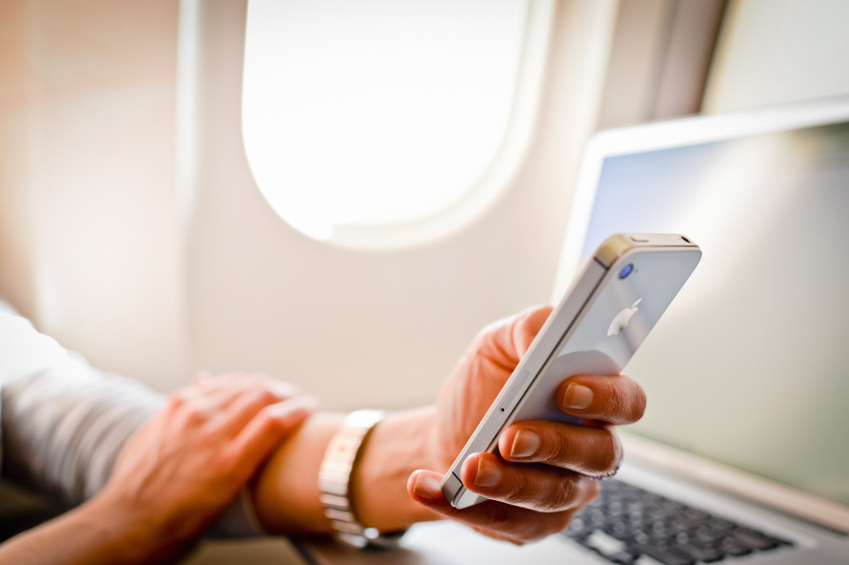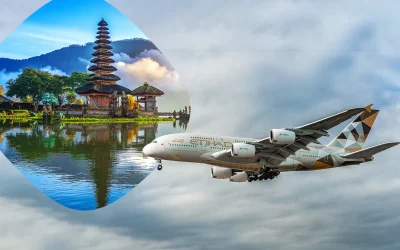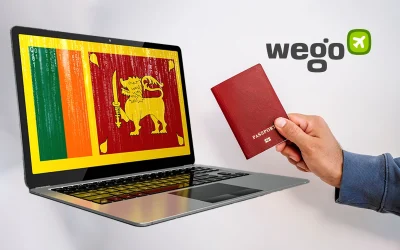Whether you dread being forced to switch off your mobile devices or welcome the break of online silence, being connected while flying has jumped to the top of airline to-do lists.
Internet connectivity was first made available to some airline passengers back in 2003 but following the September 11 attacks the industry lost interest and Boeing’s ’Connexion’ project which beamed high speed signals from geostationary satellites to specially fitted receivers on aircraft, came to a halt in 2006.
With our world now exploding with all things mobile, staying connected during flights has bought a rush of airlines vying to install, upgrade and keep us online in the clouds.
Domestic US carriers have increasingly offered wireless internet access mostly through provider Gogo although many were unsatisfied overall with the speed of wireless services, and many unhappy at the cost involved. In fact Mashable today reported that passengers would prefer a lower airfare than paying more for an airline that guaranteed Wi-Fi services.
For business travellers sitting on an aircraft means lost working hours, but it can also mean a welcome escape from meetings and a perfect time to play email catch up, so they’re more likely to seek out an airline that is connected.
The younger generation too is accustomed to sitting in a Starbucks and enjoying free internet with their latte so in general, the expectation for remaining connected wherever you are is increasing. It’s even been intimated by some in the industry that aircraft will become BYO entertainment and with more people bringing their tablets on board than laptops, they choose their own movies to watch or books and magazines to e-read.
When it comes down to it, today’s (and tomorrow’s) travellers expect Wi-Fi as a standard inclusion. This was proclaimed loud and clear recently throughout social and mainstream media channels in regards to internet charges in hotels which saw Accor introduce free Wi-Fi access across their Asia Pacific properties.
Delta, currently the world’s largest fleet of Wi-Fi connected planes, is upgrading their Gogo-based link and adding on-demand entertainment options, and in 2013, JetBlue will use ViaSat touted to be faster than its competitors, free until all 30 of their aircraft have the service installed, although email access and browsing will remain free of charge.
While many airlines in the US rely on ground connections, more are looking to satellite-based technology not only for ocean crossings but for a faster, more reliable service. Japan Airlines announced the introduction of fee based JAL SKY Wi-Fi through partners Panasonic, on some of its flights between Tokyo and New York, Los Angeles, Chicago and plans to include flights to Jakarta. Lufthansa teamed with Boingo to provide FlyNet for selected destinations between Germany, the US, Canada, the Middle East and South America and is gradually introducing the service to Japan, Korea and India, also fee based. Etihad Airways launched its new Wi-Fly network, also with Panasonic, on their Airbus A330-200 for their long-haul destinations and intend for all their aircraft to be fully connected by the end of 2014.
Singapore Airlines partnered with OnAir and will roll out a fee based service on their long-haul aircraft over the next two years and Taiwanese operator Eva Air has just announced it will introduce Wi-Fi on their brand new 777-300ER aircraft in 2014.
Meanwhile Qantas told etravelblackboard.com earlier this month that the demand for the technology doesn’t match costs following trials on flights to Los Angeles and London over the last eight months. They said less than five per cent of passengers used the service and preferred a more efficient connectivity on the ground.
While the US has been leading with in-flight connectivity for some time, and to be fair, mostly cross country, all major airlines appear to be pursuing internet and mobile availability in some form on either new aircraft or a roll out schedule across their fleet.
What’s interesting now is to watch how the technology companies vie for the airline business as the most restricting issue so far has been profitability versus cost. And let’s face it, for whatever reason, we all feel an entitlement to free and fast access to the superhighway wherever we go, even if it is at 35,000 feet.






